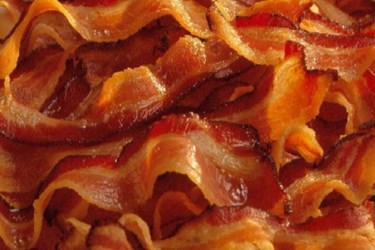Spiral Ovens Can Help Meet The Growing Demand For Better Bacon
By Isaac Fletcher, contributing writer, Food Online

With the ability to produce high volumes of bacon that more closely resemble the beloved meat traditionally fried in a pan, spiral ovens are an excellent solution for food processors looking to step up their bacon production
There seems to be no end in sight for the growing demand for bacon, and in order to meet this demand, food processors need to adapt and evolve. Linear convection ovens used to be the go-to method for cooking large quantities of bacon quickly and efficiently, but as food processors became interested in producing higher volumes, the linear microwave oven was adopted. Thanks to the ability to efficiently produce the necessary volumes, the linear microwave oven remained prevalent, despite its drawbacks in terms of the taste and appearance of finished products. As consumers demand higher-quality products, many processors are looking to another new technology… coming in the form of a spiral convection oven.
Spiral ovens function by conveying food upward via a continuous conveyor belt that transports food along multiple, circular tiers within a single-oven enclosure. When bacon is cooked with this method, the cooking meat on higher tiers renders fat, which disperses onto the bacon on lower tiers in a sort of self-basting manner. This results in an end product that tastes, looks, and smells similar to bacon fried in a pan.
Bartosz Psiuch, director of Polish food processing equipment distributor Alimp, says, “I believe the spiral oven produces a superior product in terms of bacon flavor, appearance, and aroma.” Noting the other advantages of the spiral oven, Psiuch states, “Spiral-oven technology features many controls that enable operators to regulate various parameters that affect how the product will be finished.” The controllable variables include time, temperature, humidity, and fan speed, all of which allow for unique recipe creation and different finishes for final products. Control systems are typically installed as easy-to-use touchscreen panels where the four variable parameters are easily modified and saved both horizontally (in the same product) and vertically (among other products).
Resolving Quality Issues In Food Processing & Manufacturing
With availability in both electric- and gas-powered models, spiral ovens operate on far less energy than linear microwaves and other cooking equipment alternatives. The spiral oven is also spatially efficient and requires minimal personnel to meet output needs.
Food processors interested in testing the spiral oven technology firsthand can visit Unitherm’s test kitchen in Maastricht, Netherlands. The oven is not suited just for bacon, but can cook a variety of products including chicken, seafood, kabobs, vegetables, and potatoes in a range of methods such as roasting, steaming, baking, and broiling.
